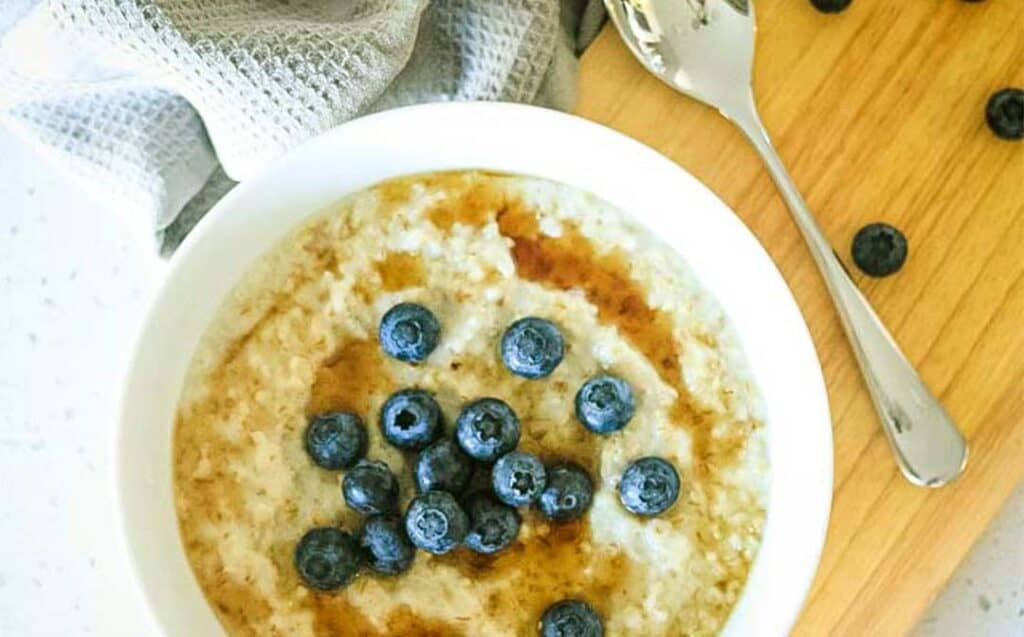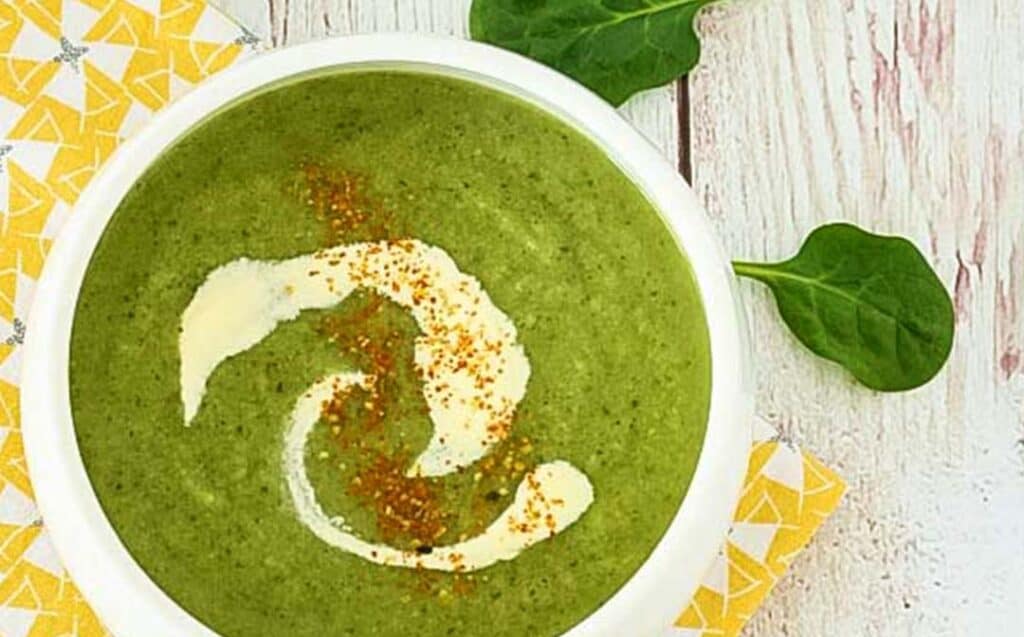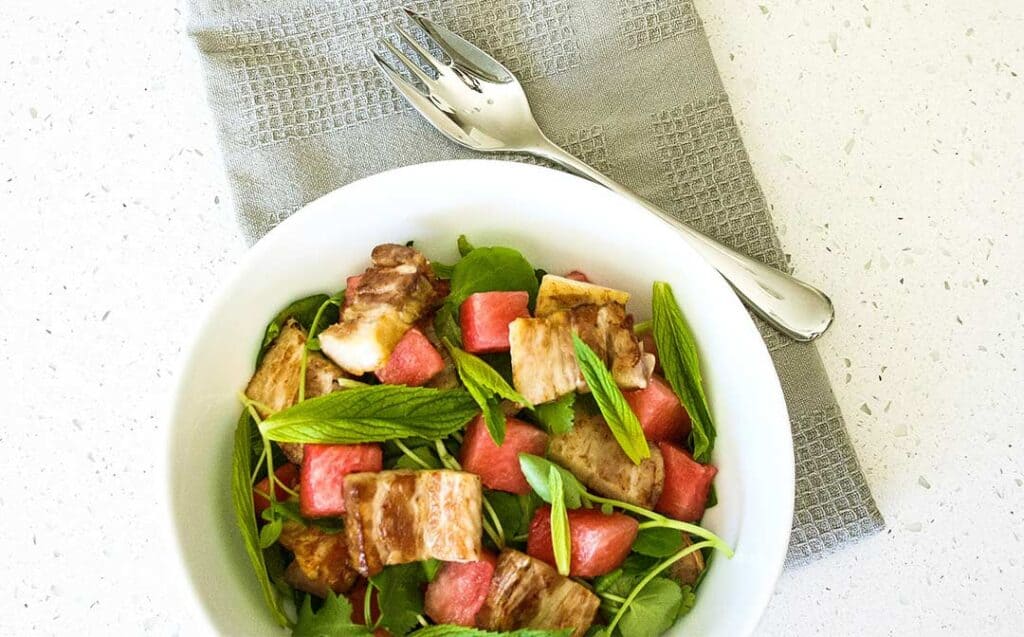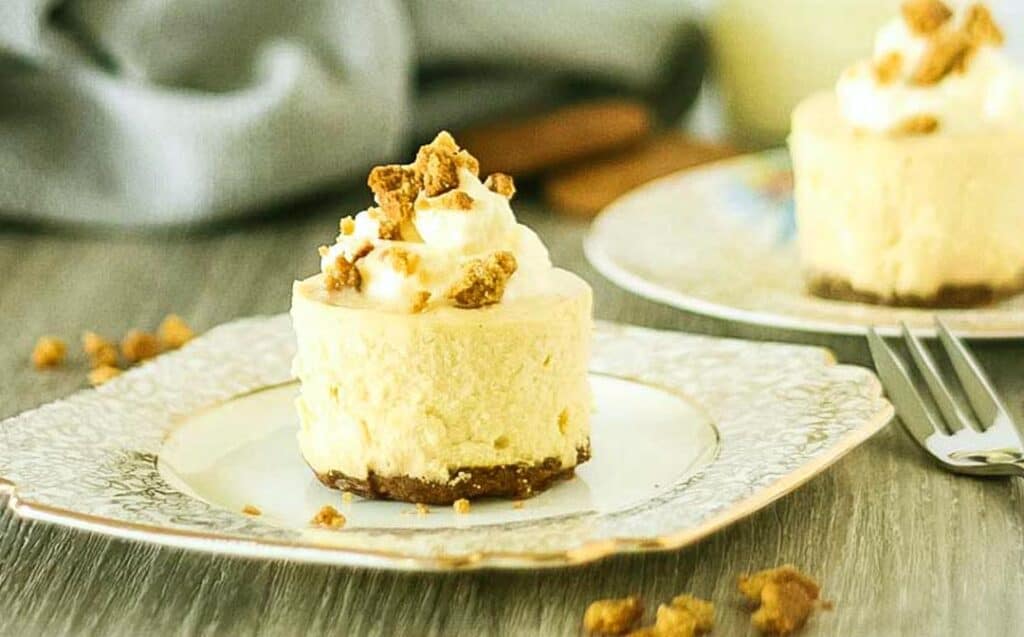This post includes affiliate links. Find out more about affiliate links and how they help this site.
I get asked all the time what kinds of foods you can, or should, cook in a combi steam oven. It’s a bit of a loaded question because you can cook almost anything using combi steam if you really want to! You just need to understand a few general guidelines, and that not every food or dish suits the method.
Today I’m going to break this topic down in the first of a two-part series (is two parts . I’ll talk about the best types of food to cook with straight steam (or steam-only). The next post details the best types of foods to cook with combi steam, and I’ll finish up with a third post talking about a few dishes which don’t really work with added steam at all (EDIT: Part 2, what foods to cook with combi steam, is now published!).
These aren’t recipe posts but I will link to relevant recipes throughout. They’re more designed as an overview so you feel more comfortable knowing which of your own recipes you can and should try in your steam oven.
I’ve also made a little printable chart for you (below), which has the highlights of what’s in these posts. Feel free to print it out and keep handy for when you’re wondering what to cook in your steam oven.

Want a PDF version of this chart? Click here to download.
Foods to cook in your steam oven using straight steam or steam-only
Steam setting, steam only, straight steam, pure steam or full steam.
Call it whatever you like, just know in your steam oven this refers to a temperature range of 30-100°C or 86-212°F, and 100% humidity level. It’s the equivalent of putting a steamer basket over a pot of boiling water on the stove.
As far as steam goes, a lot of people just think of cooking vegetables, or perhaps a lean bit of fish or chicken. There’s nothing wrong with those, but I want to suggest other things which might fill a bigger space in your everyday cooking. I cook all sorts of things using the steam setting in my oven, and in fact I’d say I use steam-only about 50% of the time.
Steam oven breakfasts and grain dishes

When it comes to breakfast, scrambled and boiled eggs are steam oven regulars in my house, as is as porridge or oatmeal. You could do creamed rice or congee in your steam oven too. You might want to start with something like a simple oat porridge or rice, and then move on to millet, buckwheat, burghul, couscous or polenta, all of which are great base ingredients for interesting salads and side dishes. All of these foods can be steamed uncovered at 100°C/212°F.
Steamed pulses and legumes
If we move on from grains, steam is also great for legumes and pulses because the gentle cooking method means they aren’t getting boiled and popping out of their skins or turning mushy. It’s not any faster than cooking them on the stovetop, but the result is superior.
It’s still a good idea to soak your pulses before cooking, or they’ll take an age to get tender. Rinse after soaking, put them in a tray and cover with fresh cold water. I can’t give you an average time for cooking because it’ll depend on what pulses or legumes you’re doing and how old they are, but I’ve cooked brown lentils in as little as 30 minutes by this method, and a particularly stubborn batch of borlotti beans in a lengthy (but uncharacteristic) 2 ½ hours.
Steam oven casseroles, curries and soups

Many saucy or soupy slow cooker dishes work well using steam. Just remember not to include too much added liquid, as it does not evaporate out and you’ll end up with something much too thin and watery for your finished dish.
Say you’re making a soup. Traditionally, you’d put in your onions and veg, then cover with stock and bring it to the boil on the stovetop. If you’re doing this in your steam oven, you’ll retain more of the nutrients and also most of the moisture in the food, and you never need to stir it. Try putting all your solid ingredients into your pot or a deep dish (I really like these deep stainless steel trays because they’re lightweight and easy to clean in the dishwasher), then topping it up with liquid to come about a third of the way up around the solid food. It won’t seem like much liquid but go with it. Steam until everything is tender and adjust the quantity of liquid at the end of cooking to make sure it’s to your liking. It’s much easier to add liquid at the end than it is to have to boil the life out of your dinner because it’s too watery.
Steam oven dumplings, pasta and gnocchi

If you’re a fan of dim sum, your steam oven is going to be your new favourite appliance. Instead of stacking multiple bamboo baskets over boiling water, you can fill up multiple large trays with all the dumplings, siu mai or wontons you can handle, and steam them in one hit.
The same goes for fresh filled pasta like delicate handmade tortellini and ravioli, and for gnocchi. Spread them out in a single layer on your oven trays and never worry about them splitting or disintegrating in a pot of water again.
With dumplings and pasta, I always make sure the pieces aren’t touching on the trays, or they’re likely to stick together. I also spritz the filled trays with a spray bottle of water. This is particularly important if your dumplings or pasta have a bit of flour dusted over them, as the spray will moisten the outside of each piece and help it steam evenly.
Steam oven stewed and poached fruit
Because steaming retains more flavour than boiling, I find I can stew fruit with less sugar, or even no sugar, which maintains its true flavour. Steamed stewed fruit also retains its shape much better. This is especially great if you want to lightly pre-cook apples for a pie, or if you just like to keep a big container of stewed fruit in the fridge for breakfasts and easy desserts.
When it comes to poaching fruit, the gentle and even heat from your steam oven will cook fruits like pears and quinces with almost no loss of shape, and it rehydrates dried fruits for a compote without them breaking down into mush, as they sometimes do when simmered on the stove.
Do you want to use and love your steam oven more?
There are precious few resources to teach us HOW to use a steam oven in everyday cooking. I’m guessing that’s why you’re here! If you love cooking but aren’t making the most of your combi steam oven, you aren’t alone.
Steam Oven Insiders was created for you!
Benefit from my decade-plus of steam oven knowledge and training, delivered to your inbox twice monthly in bite sized, easy-to-implement tips and delicious recipes you’ll actually want to cook. Insiders get access to every exclusive recipe and article within the members dashboard, so you’ll never miss a thing.
Find out more right here
Steamed lean protein (fish, chicken, seafood and meat)

You can certainly do fish, chicken, pork and other smaller bits of lean meat using steam. It’s not my preferred method of cooking for most red meats, though, unless we’re talking about sous vide, which is fantastic but a separate post for another day.
With fish, seafood, pork and chicken, you need to think about what you’re going to do with those foods for serving. Your steam oven will give a beautiful texture to lean proteins but it won’t give any browning, caramelisation or additional flavour apart from what you season it with.
Marinades come into their own with steamed proteins – just make sure they aren’t too wet as the resulting sauce will be very thin and probably a bit bland. Less quantity and a thicker marinade is definitely the way to go here, or even a dry rub which will become moistened during the steaming process.
I like to use my steam oven for fish or meat I’ll be finishing off using another method. For instance, with a poached chicken I might shred the meat and mix through mayonnaise for a chicken salad, the pork in the picture above was finished with a quick flash in a hot frypan, or a steamed piece of fish can be served with a beurre blanc sauce or a vibrant fresh salsa.
Steam oven desserts

I make a lot of steamed desserts, from cheesecake to classic English-style steamed puddings through to custards and crème brûlée. Puddings work beautifully steamed at 100°C/212°F, but having a steam oven gives you the option to cook those softer textured desserts like custards, cremes and cheesecakes at a slightly lower temperature (85-95°C) to retain a gorgeous gentle set.
Using a steam oven for kitchen prep tasks
There are a few basic kitchen prep jobs where a steam oven excels over most methods, some of which took me ages to realise!
Foods cooked or heated using a double boiler, like fruit curds, can be done in a covered dish at 85°C/185°F. Lemon, passionfruit and raspberry curd have all turned out well for me. I just put all the ingredients in a bowl and give them a good mix (use very soft butter when you’re making fruit curd by this method), then cover and pop into the steam oven. You’ll need to take the dish out and stir a couple of times during cooking, but it’s harder to accidentally curdle or split the mixture and I find it much less effort than constantly stirring over a double boiler until it thickens.
Melting chocolate is another double boiler job most people wouldn’t think of using a steam oven for, but it works beautifully as long as you keep the bowl or dish well covered when it’s in the oven (you don’t want any moisture in your chocolate or it will seize!). 40°C/104°F is my go-to temperature for this, as it means the chocolate won’t become grainy or lumpy from overheating.

Dough proving is talked about a lot in sales pitches for steam ovens, and for good reason. The moist environment and relatively lower temperatures make steam ovens an ideal environment for yeasted doughs to rise. You don’t need to cover, just put your bowl of dough into the oven and use either the dough proving setting (many steam ovens have one), or set it to steam-only at around 38°C/100°F. Pizza dough or a sandwich loaf dough made with 500g flour will take about 30 minutes to do a first prove, heavier and grainy doughs up to twice that long. Don’t go higher than 42°C/108°F for proving as the yeast begins to die off above this temperature.
If you enjoy canning and preserving, you can sanitise empty jars and process filled ones in the steam oven, too. For processing, I allow about five minutes longer than I would to process the same jar in a regular water bath, as the outsides of the jars don’t heat up quite as fast as when they’re immersed in water.
I hope that’s given you some new ideas to make the most of the steam setting in your oven. If you try any of the recipes I’ve linked to, or have success using one of the above suggestions, I’d love you to share by leaving a comment below or on the Steam and Bake Facebook page, or tagging your photos with #whatsinthesteamoven on Instagram.
Tune in over the next week for the second and third instalments in this series, covering foods to cook using combination steam and foods to cook without steam. If you’d like to be notified when those posts are published, you can subscribe to the email list so you never miss a post (plus you’ll get an invite to the subscribers-only Combi Steam Cooking with Steam and Bake Facebook group, where there are well over a thousand steam oven users from around the world, helping one another by sharing great tips and support for almost every brand).
Happy steam oven cooking, see you here again soon.


Without knowing exactly what make and model your oven is, or seeing the food, I can’t give a qualified answer to why the browning. But I wonder if the convection fan in your oven is playing a part. Some brands of combi steam oven have a pretty ‘strong’ fan, which can dry out the exterior of your food a little even on 100% humidity and straight steaming temps. If you’d like to test the theory, try covering something you’re steaming (the pork buns would be a good test) with aluminium foil. Scrunch lightly over the pan, you still want the steam to permeate, you’re just trying to stop air blowing directly over the surface of the food. I’d love to know if that helps.
Oven type: Combi steam that I can adjust relative humidity and cooking temperature
Settings: 100% RH, 212 deg F, 5 min.
I steamed 2 plates of fresh oysters on half-shelf w/ no salt, spices, sauces or oil. What surprised me is the doneness is good and the oysters are juicy as expected but the top surface is lightly browned. I cannot figure out what is causing that.
When I steamed frozen prok buns under the same settings, the edges of the bun is dried, hardened a little and lightly browned.
Liz, I also have a Thermador steam oven as of this year, and it has not proven intuitive for me. It’s a compliment to say their cookbook is limited. I need to know what kinds of cookware I can and cannot use in my steam oven and how to adapt specific recipes to my (American) cooking and vice versa. The only aspect of it I have semi-learned to do is reheat, which is excellent. I hope this "movement" will continue to grow.
Betsy
Emily, I’ve had my Thermador for 2 years now and finally, with your dedication to the art of cooking and this website, I feel I may finally understand it all the wonderful things it can do & how to best apply.
THANK YOU SOOOO MUCH for this well needed and over due reference to Steam, and Steam Combi cooking. The Thermador cookbook is so limited, and just as you said when referencing other manufacturers cookbooks Can get confusing since I don’t necessarily have the same button settings on my device. Once again I’m excited about rediscovering the oven I couldn’t wait to have but sadly rarely use!
Liz
Emily, I very much appreciate all your guidance re: using the Steam Convection Oven – thank you! These charts are excellent!
Now if I can just find more time to experiment I’d be overjoyed lol. I use my countertop Cuisanart Steam Convection Oven almost everyday but for basic meals like roasting potatoes, veggies etc and a lot of warming left overs! I’d love to try baking cakes, muffins etc using the Steam convection setting as you suggest.
Have a terrific, hopefully sunny weekend, as it is here in West Vancouver, BC.
Thanks Andrea. I want to use my steam oven more often but the recipes and guides that come with the appliance are not as clearly laid out as your post. I have downloaded the steam portion and look forward to the next two,posts. I’m eager to try something this weekend.
Thanks this is handy info 🙂
Fantastic Emily. This is just what we all need and will be a great resource. Keep up the great work you are doing for all of us Steam and Bakers.
Thanks! this is great!
thanks for this article! I have a stream oven only (not combo steam) so I often ask myself how can I use it to cook more dishes–not just steam broccoli?
Fantastic advice thank you so much it’s giving me more confidence
This is sooo useful – thanks! I love my steam oven – but this is great to have everything in one place!